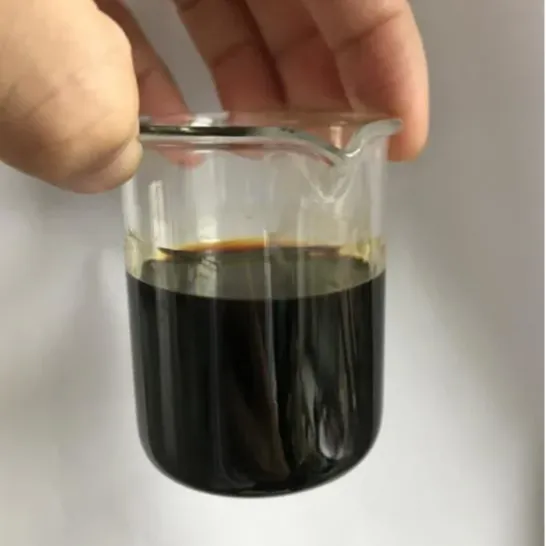
Nov . 08, 2024 22:44 Back to list
Exploring the Effectiveness of Amisulbrom Fungicide in Crop Protection and Disease Management
Understanding Amisulbrom Fungicide A Comprehensive Overview
Amisulbrom is a broad-spectrum fungicide that has gained attention in the agricultural sector due to its efficacy in combating a variety of fungal diseases. As plant health becomes increasingly important in ensuring food security and sustainability, the role of effective fungicides like amisulbrom cannot be overlooked. This article delves into the characteristics, benefits, application methods, and safety considerations associated with amisulbrom fungicide.
Chemical Composition and Mechanism of Action
Amisulbrom belongs to the class of fungicides known as benzobisthiazoles. Its chemical composition allows it to act on multiple targets within fungal cells, disrupting key biological processes. The primary mode of action involves inhibiting the synthesis of certain proteins essential for fungi to grow and reproduce. By affecting mitochondrial function and cellular respiration, amisulbrom effectively suppresses a wide range of fungal pathogens, making it a valuable tool for farmers.
Efficacy Against Fungal Diseases
One of the standout features of amisulbrom is its effectiveness against various fungal diseases that affect crops. It is particularly useful in managing diseases such as powdery mildew, downy mildew, and various leaf spots. The ability of amisulbrom to control these diseases translates into healthier plants, higher yields, and better quality produce. Moreover, its efficacy is often seen even at lower application rates, making it not only effective but also economically viable.
Application Methods
Amisulbrom can be applied using several methods, including foliar sprays, soil drenching, and seed treatment. The most common application involves foliar sprays, where the fungicide is mixed with water and sprayed onto the foliage of plants. This method ensures that the fungicide reaches the affected areas directly, promoting quick uptake by the plant.
Timing is crucial when applying amisulbrom. It is most effective when applied preventively or at the first sign of disease symptoms. Farmers are encouraged to monitor their crops closely and adhere to recommended application schedules to maximize the fungicide's efficacy.
Integration into Integrated Pest Management (IPM)
amisulbrom fungicide

One of the key advantages of amisulbrom is its compatibility with Integrated Pest Management (IPM) strategies. IPM is a holistic approach that combines various practices, including biological control, cultural practices, and the judicious use of pesticides. By incorporating amisulbrom into an IPM program, farmers can achieve sustainable pest control while minimizing the risk of developing resistant fungal strains.
Environmental and Safety Considerations
While amisulbrom is an effective fungicide, it is essential to consider its environmental impact. Like all chemical treatments, it should be used responsibly to minimize potential harm to non-target organisms, including beneficial insects and soil health. Farmers are advised to follow label instructions carefully, adhere to application rates, and consider weather conditions when applying amisulbrom to mitigate runoff and potential contamination of water sources.
Safety is another critical consideration. Proper protective equipment, such as gloves and masks, should be worn during application to minimize exposure. It is also essential to store amisulbrom in a safe location, away from children and pets, and to dispose of any leftover product following local regulations.
The Future of Amisulbrom in Agriculture
As the agricultural sector continues to face challenges from emerging fungal pathogens and resistance issues, the role of effective fungicides like amisulbrom will become increasingly vital. Ongoing research and development are likely to enhance our understanding of its applications and improve formulations to make it even more effective.
Furthermore, as consumers become more conscious of sustainable practices, the demand for environmentally friendly fungicides will likely increase. Amisulbrom’s potential for integration into sustainable farming practices positions it as a frontrunner in the fight against plant diseases while maintaining the balance of ecosystems.
Conclusion
Amisulbrom fungicide represents a significant advancement in the battle against fungal diseases in agriculture. Its broad-spectrum effectiveness, compatibility with IPM strategies, and the scope for environmentally responsible use make it an essential tool for modern farmers. As research continues to reveal new insights into its applications, amisulbrom is poised to play a crucial role in ensuring healthy crops, sustainable farming practices, and ultimately, food security for future generations.
-
Azoxystrobin: Broad-Spectrum Fungicide Solutions
NewsAug.11,2025
-
Best EPA Boscalid: Superior Crop Fungicide for Max Yields
NewsAug.11,2025
-
Best Willowood Imidacloprid: Superior Pest Control Solutions
NewsAug.10,2025
-
Best EPA Boscalid Fungicide: Ultimate Crop Protection
NewsAug.09,2025
-
Cyprodinil Fungicide: Broad-Spectrum Crop Protection
NewsAug.08,2025
-
Tembotrione Herbicide: Advanced 8% OD for Broad Spectrum
NewsAug.07,2025
